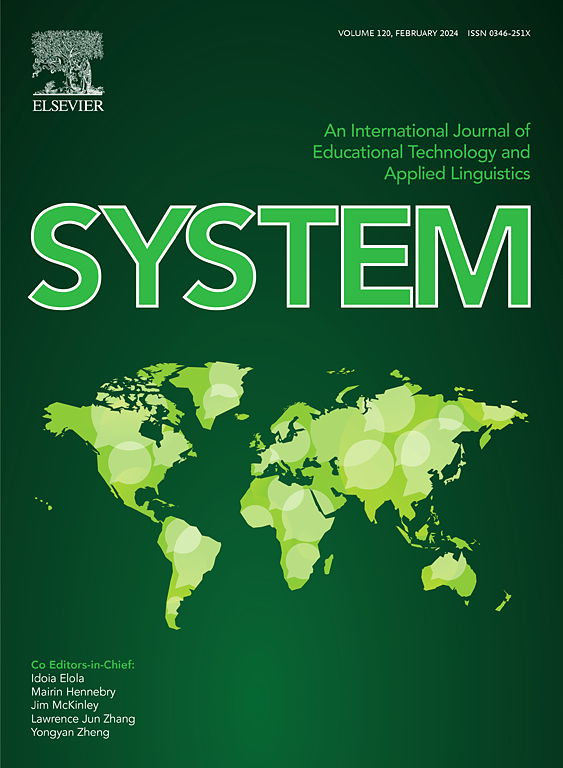故事续篇写作任务的写作质量评估:语言一致性的作用
IF 5.6
1区 文学
Q1 EDUCATION & EDUCATIONAL RESEARCH
引用次数: 0
摘要
故事延续写作任务(SCWT)作为一种有效的教学和评估工具已经出现。迄今为止,大多数关于SCWT中语言对齐的研究都集中在其学习效益上,很少从评估的角度对其进行探索。目前的研究通过调查语言一致性和写作分数之间的关系来解决这一差距,以确定通过与阅读文章的一致性来衡量的目标能力,这被认为是在xu-argument的理论框架内的SCWT的独特结构。我们的数据包括99个写作样本,这些样本是由99个中国高中英语学习者作为外语学习者为续篇任务而产生的。在先前研究的基础上,我们从三个维度来衡量对齐:词汇、句法和语义。研究发现:1)学习者的续句主要通过实义词和句法结构的重复使用来与阅读文章紧密结合,并进一步表现出高度的语义相似性;2)更高的对齐水平并不一定与更高的写作质量相关。其中,实词重叠、名、动词近义词与写作成绩呈负相关,语义相似度与写作成绩呈正相关。这些结果表明,从教学和评估的角度来看,一致性可能被认为是不同的。此外,语篇接续语的衔接结构与接续语的衔接和创造性密切相关。讨论了这些发现对修订SCWT评级标准的影响。本文章由计算机程序翻译,如有差异,请以英文原文为准。
Assessing writing quality in story continuation writing tasks: The role of linguistic alignment
The story continuation writing task (SCWT) has emerged as an effective pedagogical and assessment tool. To date, most studies on linguistic alignment in the SCWT have focused on its learning benefits, with few exploring it from an assessment perspective. The current study addresses this gap by investigating the relationship between linguistic alignment and writing scores in the SCWT to identify the target abilities measured by alignment with the reading passage, which is considered as a unique construct of the SCWT within the theoretical framework of xu-argument. Our data consist of 99 writing samples produced for a continuation task by 99 Chinese high-school English as a foreign language learners. Building on previous studies, we measure alignment in three dimensions: lexical, syntactic, and semantic. The study finds that: 1) learners’ continuations tend to align closely with the reading passage, primarily through the reuse of content words and syntactic structures and further characterized by a high degree of semantic similarity; 2) higher alignment levels do not necessarily correlate with higher writing quality. Specifically, the overlap of content words, and noun and verb synonyms negatively correlates with writing scores, while semantic similarity has a positive correlation with writing scores. These results suggest that alignment may be perceived differently from pedagogical and assessment perspectives. Furthermore, the construct of linguistic alignment in the SCWT is closely related to the cohesion and creativity of the continued story. The implications of these findings for revising the SCWT rating rubrics are discussed.
求助全文
通过发布文献求助,成功后即可免费获取论文全文。
去求助
来源期刊

System
Multiple-
CiteScore
8.80
自引率
8.30%
发文量
202
审稿时长
64 days
期刊介绍:
This international journal is devoted to the applications of educational technology and applied linguistics to problems of foreign language teaching and learning. Attention is paid to all languages and to problems associated with the study and teaching of English as a second or foreign language. The journal serves as a vehicle of expression for colleagues in developing countries. System prefers its contributors to provide articles which have a sound theoretical base with a visible practical application which can be generalized. The review section may take up works of a more theoretical nature to broaden the background.
 求助内容:
求助内容: 应助结果提醒方式:
应助结果提醒方式:


